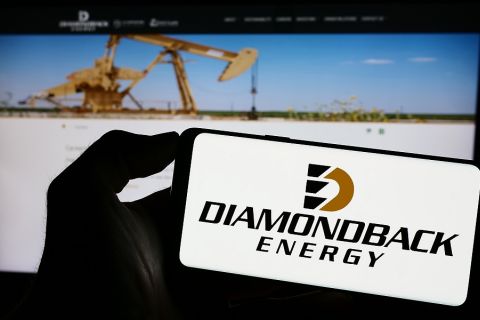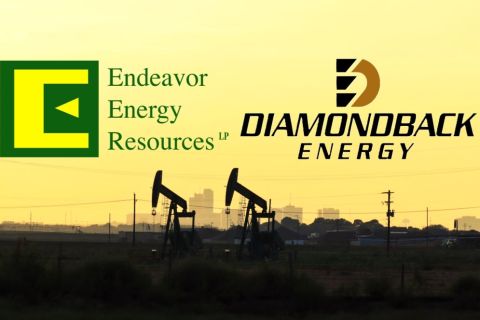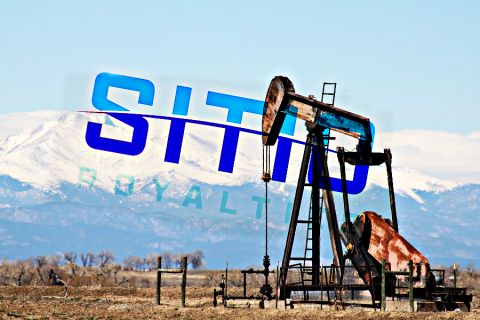
HOUSTON—The International Energy Agency projects demand could catch up to supply in the second half of 2016, rebalancing the market, assuming OPEC production remains relatively flat at first-quarter 2016 levels.
But that may not be enough to end the oil and gas industry’s problems, according to Chuck Davidson, venture partner for Quantum Energy Partners and former CEO of Noble Energy (NYSE: NBL).
“We have a massive amount of oil in inventory,” Davidson said, pointing to about 540 million barrels of oil in storage, excluding the Strategic Petroleum Reserve, in the U.S. alone. “At some point, we’ve got to pull storage down and that may drag things out a bit.”
The drilled but uncompleted wells (DUCs) could be another overhang on the market. Speaking during the Mayer Brown Global Energy Conference on May 17, Davidson said the U.S. has about 4,000 DUCs, including about 1,400 in the Eagle Ford. Completing these wells could bring on between 500,000 and 1 million barrels of per day of production, Davidson said.
“That might be good if there is a sudden price increase and we need to increase supply,” he added. But considering the abundant inventory, “it might be a damper on the markets.”
Hope of a turnaround remains as the industry watches production and stockpile levels fall in the U.S. and disruptions brought by Canadian wildfires and political unrest in Nigeria drive up oil prices, which was about $48.44 per barrel (/bbl) at 3 p.m. (CT) May 17. Since OPEC decided in November 2014 to maintain production levels, oil prices have plummeted from highs of more than $75/bbl. Natural gas prices have tumbled from more than $4 /MMbtu to about $2/MMbtu today.
Waning profits have pushed oil and gas companies to technology and better ways of operating. How the industry “gets out of this mess,” as Davidson put it in his presentation, will require addressing financial issues, but opportunities still remain.
New Day, New Norm
“We’re seeing companies trying to deal with the burdens of debt, trying to adjust their programs so they get a balanced cash-in versus cash-out,” Davidson said. “Unfortunately the impact was so great that a number of companies are unable to do it without having to go through some serious restructuring.”
Each week has brought another round of bankruptcies. Penn Virginia Corp., Linn Energy LLC, SandRidge Energy Inc. and Breitburn Energy Partners are among the latest.
“Business models have to be re-examined. What worked in 2013 won’t work today,” he said, noting companies are to review spending models, ask whether the business is sustainable and pinpoint core areas. “In some instances you see companies selling off assets that are now viewed as noncore,” and not sustainable in today’s market conditions.
Many companies have been forced to change their business models—moved not only by market conditions but also by banks becoming more restrictive on what they will loan, he said. Although companies are becoming more disciplined, don’t expect all of them to avoid picking up rigs if oil prices rise by $5.
“This industry loves to develop oil and gas. That’s actually good and bad news,” he said.
Still, “as you go forward, we have to have global supply equal demand.” That would come as the supply comes down via reduced drilling, inventories bleed off and demand growth.
The U.S. Energy Information Administration forecasts energy consumption will rise 48% by 2040. Most of the oil consumption growth is expected to happen in non-OECD countries, particularly Asia.
Gains, ‘Good Rock’
The downturn has led to positives, including efficiency gains.
Davidson referred to drilling productivity gains in the Marcellus and the Eagle Ford, where drilling rigs are eight times more productive in terms of production per rig month than six years ago.
Strides have also been made in lowering costs, but “not without pain because many of those cost improvements were a result of reductions in service costs that flow to the service providers.”
Even at today’s low prices, there are still areas that are commercial because of efficiencies, he added, eyeing the bright light near the end of this tunnel. The industry “has trimmed itself down and gotten its fiscal house better in order. But we’re not quite at the end of the tunnel.”
In the meantime, there are still opportunities to strengthen portfolios.
With capital available for private equity, “there is no lack of opportunity,” Davidson said, adding Quantum is staying busy as some work to acquire noncore assets and others, specifically distressed companies, approach wanting an injection of equity. In some instances, the bid-ask spread remains.
“We’re investing in both natural gas and oil,” he added, speaking favorably of the Scoop and Stack in Oklahoma as well as both the Delaware and Midland basins in the Permian. “We tend to go into good rock. It’s more expensive to invest in good rock, but good rock seems to be more resilient,” he said
But he warned that investors still have to be careful on how capital is allocated.
Velda Addison can be reached at vaddison@hartenergy.com.
Recommended Reading
Permian Resources Continues Buying Spree in New Mexico
2024-01-30 - Permian Resources acquired two properties in New Mexico for approximately $175 million.
Marketed: EnCore Permian Holdings 17 Asset Packages
2024-03-05 - EnCore Permian Holdings LP has retained EnergyNet for the sale of 17 asset packages available on EnergyNet's platform.
Diamondback Energy to Acquire Permian’s Endeavor for $26B
2024-02-11 - Diamondback Energy will acquire Endeavor Energy in a cash-and-stock agreement that will create a Permian juggernaut with a combined value of more than $52 billion in a merger of near equals.
Analysts: Diamondback-Endeavor Deal Creates New Permian Super Independent
2024-02-12 - The tie-up between Diamondback Energy and Endeavor Energy—two of the Permian’s top oil producers—is expected to create a new “super-independent” E&P with a market value north of $50 billion.
Sitio Royalties Dives Deeper in D-J with $150MM Acquisition
2024-02-29 - Sitio Royalties is deepening its roots in the D-J Basin with a $150 million acquisition—citing regulatory certainty over future development activity in Colorado.




